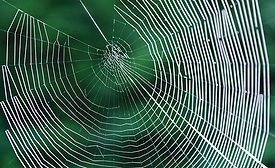Sustainability
Covestro to Halve Energy Use by 2030
Covestro recently announced it wants to halve its energy use per ton of manufactured products by 2030 relative to a baseline of 2005.
May 18, 2016
Stora Enso Signs Joint Technology Agreement with Rennovia
Stora Enso and Rennovia recently announced a joint agreement to cooperate on bio-based chemicals development.
May 16, 2016
Sirrus Synthesizes New Bio-Based Monomer
Sirrus has successfully synthesized its ChemilianTM 1,1 di-substituted alkenes using Lygos’ “bio-DEM”.
May 13, 2016
Study Finds Discrepancies in Chemical Hazard Evaluation Tools
A comparative analysis of leading chemical assessment tools found that, when evaluating the same chemical, individual tools come to different conclusions regarding the hazard categorization of each chemical.
May 9, 2016
Window Film and Affordable Sustainability
Window film provides nearly all of the benefits of other green upgrades at a fraction of the cost.
May 2, 2016
Regulatory Review
Transparency through an Agency Website? Maybe Not.
The Office of Environmental Health Hazard Assessment’s (OEEHA) new website could create more confusion for the public at the expense of those doing business in California.
May 2, 2016
Advancing Adhesives
Material Solutions for Medical Wearables
Films allow sensitive electronics to be directly embedded more efficiently.
May 2, 2016
Advancing Adhesives
Spider Silk Brings Adhesive Opportunities
Spider silk has the potential for industrial use in applications including ligament and tendon repair, advanced coatings, and bioadhesives.
May 2, 2016
Keep the info flowing with our eNewsletters!
Get the latest industry updates tailored your way.
JOIN TODAY!Copyright ©2024. All Rights Reserved BNP Media.
Design, CMS, Hosting & Web Development :: ePublishing





